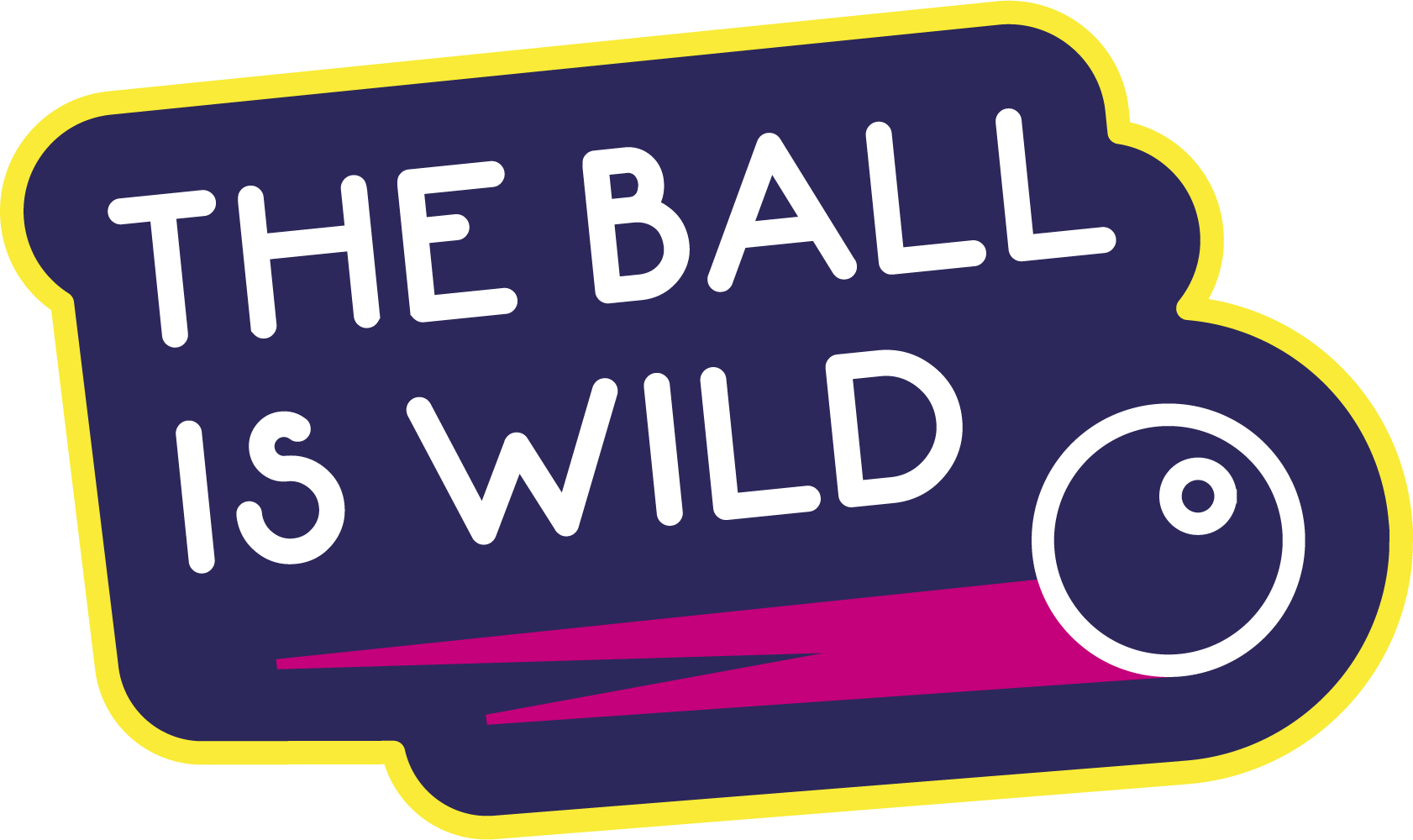When Jersey Jack arrived as a company in early 2011, it was the start of the pinball renaissance that we are experiencing today. After many years of Stern Pinball being the sole manufacturer of new machines, a competitor finally arrived. But the company’s CEO wasn’t a new face. Quite the opposite: Jack Guarnieri has been a veteran in the coin-op business and in contact with the silverball since the 1970ies. Thanks to his decades of experience as an operator and seller of pinball machines, he was well aware of the core problem that drove pinball out of the arcades in the 80ies and 90ies. Videogames have been a very strong new competitor, sure, but it was mainly the problem of high maintenance that kept pinball from earning the good profits that videogame cabinets brought in back then. With the promise of high production quality, audiovisual distinctiveness and deep rulesets, Jersey Jack raised the stakes of the modern pinball experience and started becoming a rolemodel for other companies to join in on the market.
Four years ago, in the Spring of 2014, I had the pleasure to meet Jack Guarnieri in his office at Lakewood, New Jersey, get a special factory tour with him and then conduct an interview for this blog that was already conceived but still not existing back then. I perceived Jack as the kind, modest and entertaining man as he is and was very thankful that he took the time to show me around. A few weeks ago, I met him again in my home country of Austria, when he was invited by local distributor RS Pinball to show the brand new “Pirates of the Carribean” table (here is a story about the event in German – please use your translation tool of choice). Jack was excited to be part of the event and was very open and cheerful, mingled with pinheads and visitors alike and also gave a fun and insightful talk. It was great to meet and talk to him again.
Meeting Jack again was a good occasion for me to go back in time and transcript the interview from 2014 which can be considered a The Ball is Wild classic that now finally gets published. Enjoy!
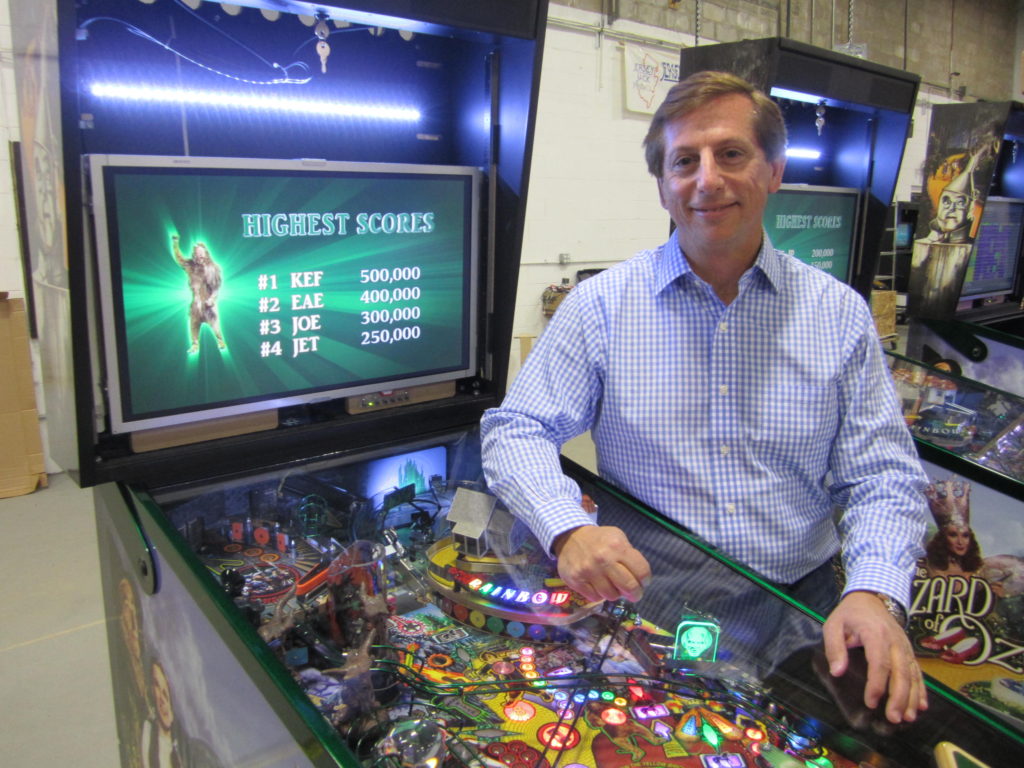
When did you first have the idea of starting your own pinball manufacturing company?
I own Pinballsales.com and for many years, we have sold thousands of pinball machines, primarily to the home market. And then, as we got into 2010, there were less games that seemed to find their way into the home. And I had a lot of customers that were looking for full-featured games with a lot of things happening on them and this kind of gave me the idea to start the company with „The Wizard of Oz“ as our first game.
How difficult was it to start a pinball manufacturing company from scratch?
Looking back at it, it‘s kind of crazy, but the longest journey starts with the first step. So I think the first and hardest thing to do was for me to decide that I was gonna do this. And once I knew I wanted to do this, I knew where we would go and that involved hiring some really great people that have done some of this before.
With your first table „The Wizard of Oz“ you brought back some elements and design decisions that we haven‘t seen for a while – like the widebody size. Was this a conscious decision in order to differentiate Jersey Jack Pinball from the competition?
You have a unique opportunity when you start something new. You don‘t have to go and be stuck with a certain electronics system or a way of thinking. Basically, you take a white piece of paper and think about all the things we love about pinball. We love a lot of mechanical action where the ball interacts with things on the game. We all knew that we wanted to take new technology that exists today and that will still exist tomorrow and make a game that would be truly sensory overload: not using any lightbulbs, using all LEDs, RGB LEDs. You are doing a game with 2.1 audio, you have a game where you can plug headphone jacks into it and adjust the sound. You have a widebody, as you said, which was something unbelievably different – you haven‘t seen that since 1995, I believe. You have an LCD in the backbox and it‘s only that size because I couldn‘t get one bigger. And you have an LCD actually on the playfield also – so you have the first game with two LCDs on it as well.
How do you hire people?
We hire people sometimes from our customer base, believe it or not. We got a lot of people that ask us, too. It‘s pretty cool when you have people that have a passion for pinball first and it‘s not just somebody that wants to come and make a million dollars a year and they run out the door at five o‘clock.
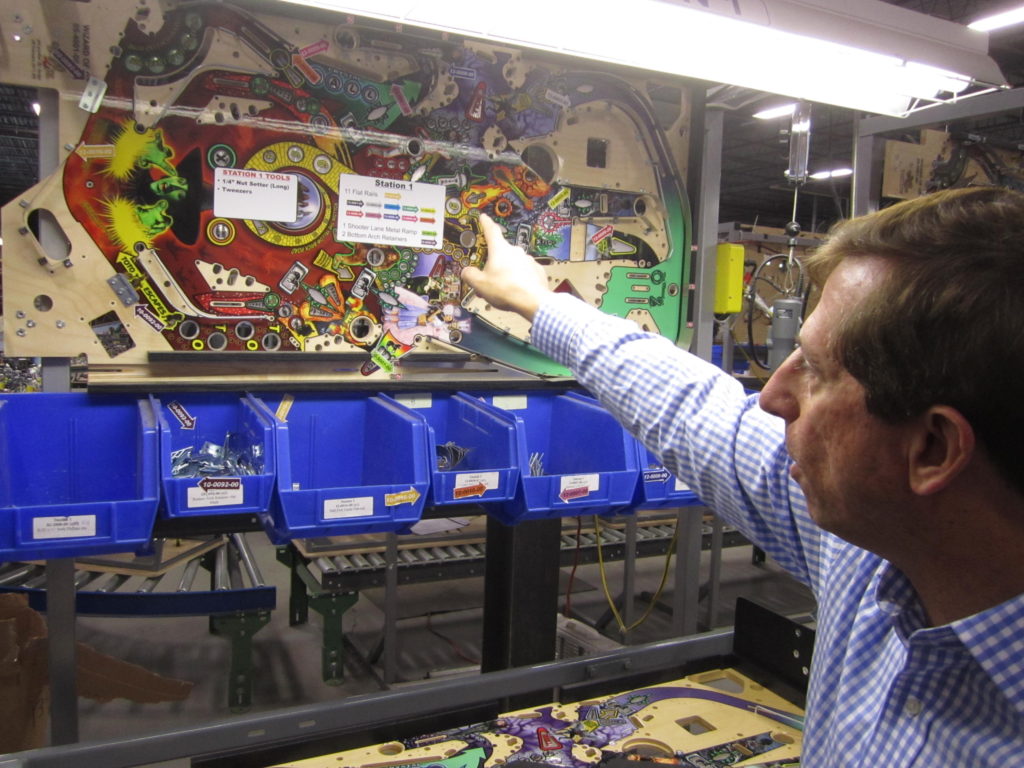
What is your vision for Jersey Jack Pinball?
We want to keep building great games, that‘s the focus of the company. The part of me that‘s an operator wants games that make money. So my ingredients are: The game needs to be fun and it needs to work. If you have those two elements, it makes money. People want it for the home or they want to play it on location.
With „The Wizard of Oz“, what was the team like?
Joe Balcer is the designer of the game, and bringing him together with Keith Johnson – they did „The Simpons Pinball Party“, which was very successful -, that was the core where we started from. As artists we have JP de Win from Holland – he does all the animation -, we have Jerry Vanderstelt who does the cabinet, we have Greg Freres who does the playfield. There has been a lot of collaboration with a lot of different people.
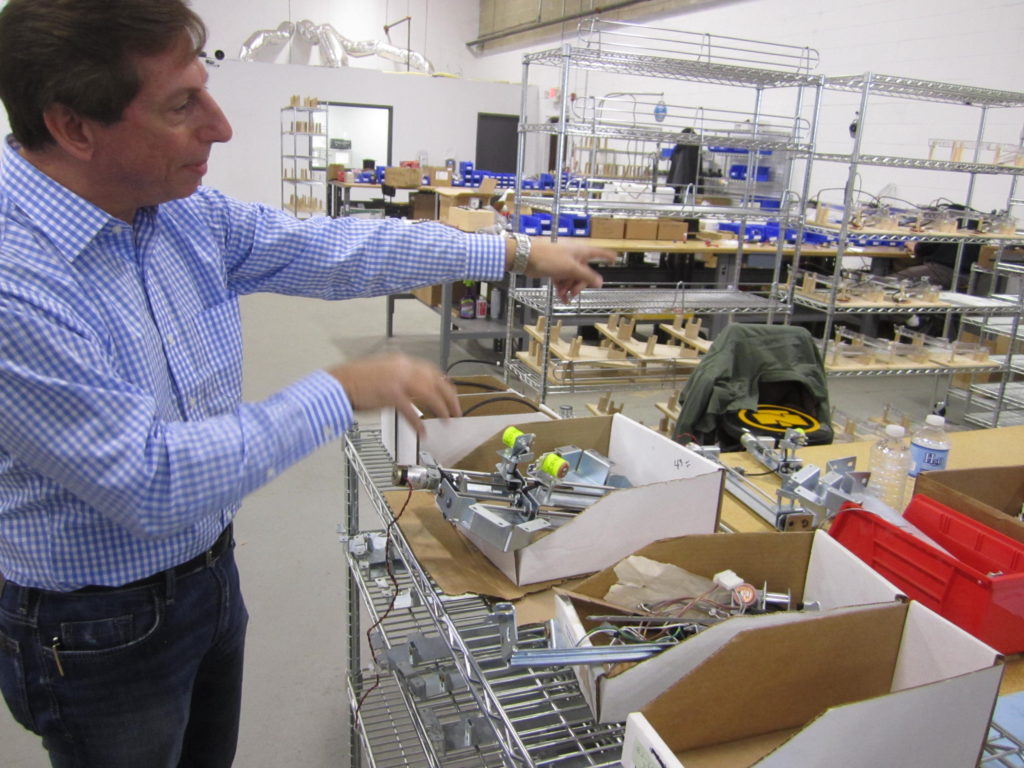
For about ten years, there was just Stern Pinball as the only manufacturing company left. Now, Jersey Jack is here, and also some smaller boutique manufacturers who do their own DIY pinball machines. There is this pinball resurgence going on, what do you think about it?
I think it‘s great. I would like it if there were 50 companies building pinball machines. I think more pinball is a great thing and I applaud all the small companies. People don‘t remember: An oak tree grows very big, but one day, it was an acorn. Even a car manufacturer like Buick: The first year they were in business, they only built 37 vehicles. So everybody needs to start from somewhere and if they have a passion for it, that‘s great. But if you build a one-of-a-kind of a pinball machine, it‘s different than doing it on the scale where you become a commercial enterprise and you‘re a business and you‘re making money because there are a lot of things to consider. If I built one pinball machine and it went in your home and your home burnt to the ground, that would be one thing. But if you take money from people and build the machine and it goes in your home, you need to make sure you have proper liability insurance and have it certified and all those things that you need. And that takes you from being a hobbyist to a real company, and there is a lot more that goes with that.
You‘ve seen a lot of change within the pinball industry throughout the last decades. What changed in terms of manufacturing?
Not a lot actually, until we opened our company – of course, that‘s my opinion. We do things a lot different than other manufacturers do. It is still built by human beings. You can build ten pinball machines with all the same parts and people, but each of those machines will play and react differently so some extent. That‘s the nature of something being assembled by human beings. We‘re standing here in our conference room and there is a PONG videogame, serial number 17. And you look at that game and it‘s the great grandfather of a lot of coin operated amusement games. But when you see what‘s in it and what was constructed in that, it‘s a few basic parts and off-the-shelf type of things … there‘s a TV set in there that someone bought at an electronics store and stuck it in there. We really don‘t have any of those items in our games. So, today, all the parts that come to our games, thousands of them, are unique – maybe except for some screws and some hardware and things like that. And they were all made specially for us. The manufacturing process is the same as some things that happened when they built PONG and it‘s also different because of the technologies that exist today. But again, the key that you need when you build this item, is not that somebody is working here just for a job and runs out the door at 5 o‘clock. They have to have a passion for it, they have to know what it is to feel the assembly of it but also know the feel of the play of it. And the way we design the assembly line in a serpentine instead of a line is that I wanted to have the final rest row within vision of all the people that worked on the line. We have a lot of customers who come here every day, pick up their games, play games and it‘s a lot of an experience for those people. So we take a lot of pride in what we are building and that‘s why it comes out better also.
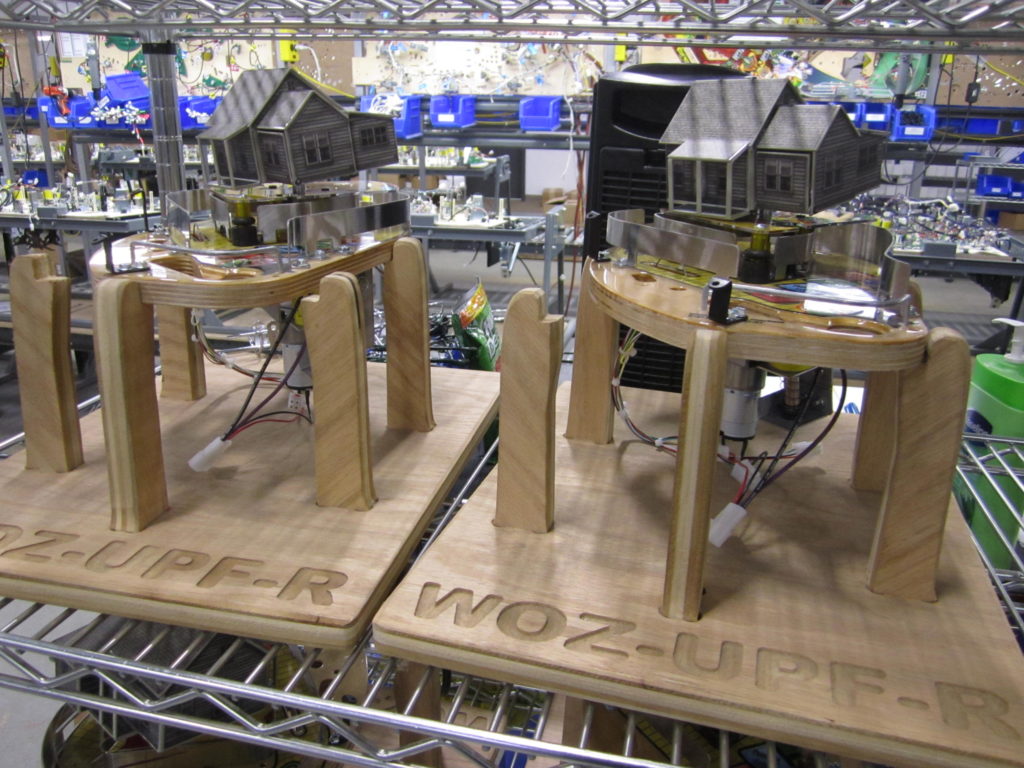
You mentioned PONG. Videogames were mostly responsible for driving pinball out of the arcades. How do you see the tension between pinball and videogames today?
I love videogames. And as an operator in the industry in the 70ies and 80ies, we made a lot of money with videogames. We also made a lot of money with pinball machines. What happened with pinball, obviously, is that it‘s easier operating a videogame. As for the play: You had one player after another playing a pinball machine but you sometimes had three or four players playing a videogame at the same time. So videogames made more money and they are easier to maintain. As with pinball: Operators tolerate the aggrevation factor. So the more money a game makes, the more aggrevation they‘ll tolerate. But with pinball, it was a lot of diminishing returns. They made less money, so operators took less care of them and they made less money because operators took less care of them. And it went down and down. Today, you have a lot of survivors that are operators. And they‘re very smart. So they know a good pinball machine with the right features is going to make them a good return on their investment. And then they can always take it and sell it for a price pretty close to what it had cost them. It‘s a resurgance because a lot of people are rediscovering pinball, also because it‘s mechanical and it‘s a game of skill.
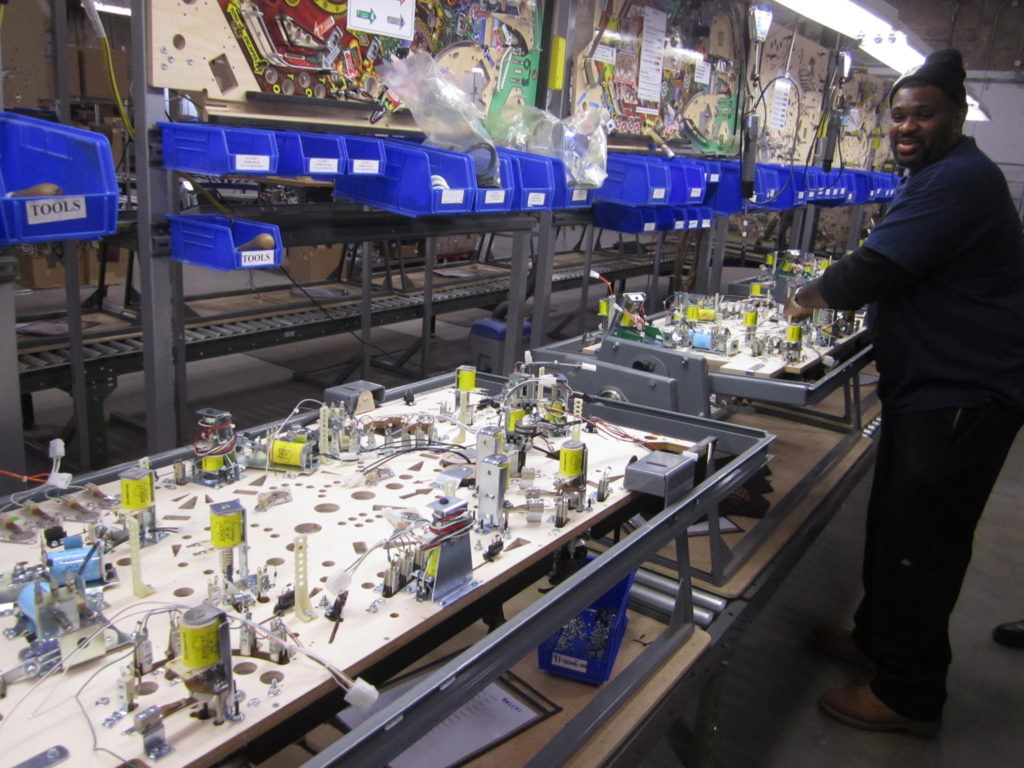
What‘s the ratio between privately owned pinball machines and those operated in public places?
About 80 percent of our sales are to home customers. And that was cultivated through Pinballsales.com, where we were primarily selling to home customers. I have a lot of friends in the industry doing this for 39 years. They operate games in movie theaters and different family entertainment centers and venues like that around the world. And they can‘t buy crane games – they have enough of those. You buy a crane and you‘ve bought it for 20 years, and you buy a redemption game, and it‘s gonna give tickets, and you buy a videogame and it‘s going to have this bell-curve of earnings where it earns big and then it goes down. So pinball is the old standby, where you can put it in a street location and then it‘s gonna make you money. You can operate it in movie theaters and different places. I think, some of the operators now, they have to buy things and they are coming back to pinball machines. They are coming back to our pinball machines because they see our games as something new: new technology, it attracts women to play the game and it attracts young people to play the game – people that typically didn’t play pinball before.
Pinball has always been deeply rooted within US pop culture. How international is pinball nowadays?
My exposure to international customers only goes back to about 1999. At that time I was buying containers of pinball machines from customers in Europe, bringing them to the US, reconditioning those games and selling them for the home. I bought „The Addams Family“ for 600 bucks and all those great games I wish I had right now. But certain countries – Germany, France, Austria, Austrialia, Canada – have this unbelieveably huge ground swell grassroots amount of players that are just in love with pinball machines. And it‘s growing in other countries: Russia, Poland, Czech Republic – different places where they are first discovering it and soon want more.
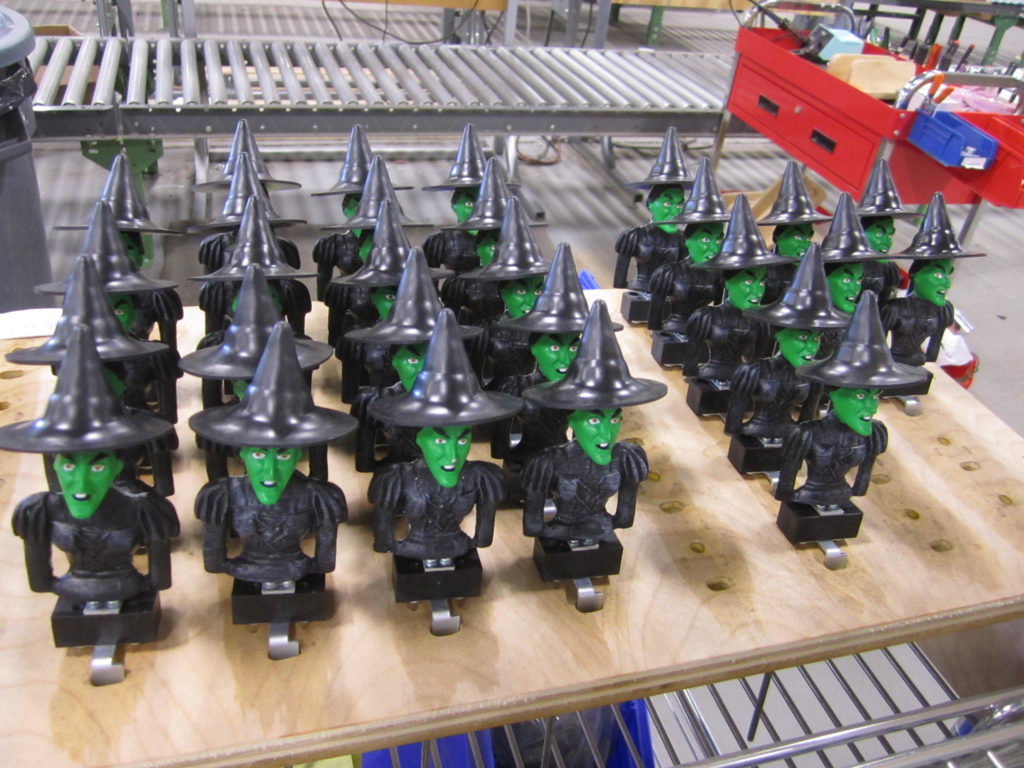
Why is New Jersey and „Jersey“ so important to you that it is in the company‘s name?
I write for Replay Magazine in our industry, and my pen name that was given to me by the publisher of the magazine is Jersey Jack. And even though I‘m a New Yorker, I live in Jersey for the last 25 years. When he called me Jersey Jack, he said: Well, I‘m calling you Jersey Jack because I could call you worse than that. So I said: Okay, well, that‘ll stick. So when we were setting up the company I wasn‘t gonna put Jack in the name and I wasn‘t really gonna put Jersey in there. We were kicking names around and a bunch of our customers said: Use your Jersey Jack name. I want a Jersey Jack pinball machine, that would be cool! And so we did that. It wasn‘t an egomaniac kind of thing. Chicago might be the mountain of pinball, but, you know, mountains get eroded and new mountains get formed also. And there was an ice age in pinball where that has all melted right now. I don‘t know if that really matters but we get parts from all over the country and all over the world. We also have vendors in Chicago, we have vendors in New Jersey. We make a lot of things that come from the United States and then there are things that come from Asia and different places. We‘re an equal opportunity buyer. We don‘t have any lines that we don‘t cross and we want our games to go everywhere in the world where people want to buy them and play them. So they are set up that way, too.
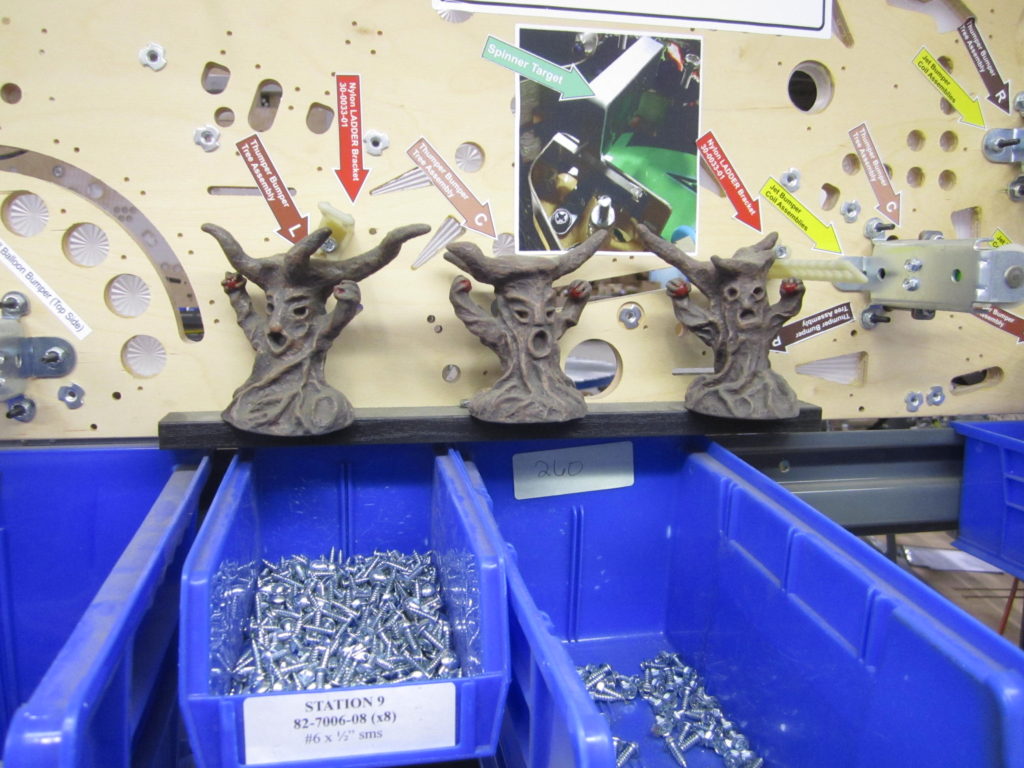
Recently, the famous pinball designer Pat Lawlor joined Jersey Jack Pinball. Can you tell me a little bit more about this partnership?
Pat is a not only a really great designer but also a great person. I‘ve come to know him over the years and as an operator, he was a big hero of mine because I operated games that he made that made money. And we have Joe Balcer doing „The Hobbit“ and „Wizard of Oz“. He did „South Park“ and he did „The Simpsons Pinball Party“ and a lot of other games that made money. And he was a hero of mine, too. And having Pat come to the company where we didn‘t have to go out and look for him … it was mutual. He wanted to make a great game on our platform and he wanted to do it with somebody that had passion. We weren‘t gonna build games with calculators and say: Okay, we need to make this much money on the game. We need to make a great game and it needs to be built with passion first. We need to see things within reason but if Pat comes to me and he justifies why he‘s putting what in his game: I‘m a player and a lover of the game, so I would rather put more ingredients on the playfield to make the game better rather than just say „Take all the fun out of the game because we have to push it out of the door“. We‘re not doing any of that stuff.
When things really start to get rolling in about five years or so, how many games do you want to put out? One game or even two?
Well, I think even before five years we‘ll get to one-and-a-half a year. And then we‘ll get to two a year. And then, perhaps, we‘ll get to three. But quality is more important than quantity for me right now. I guess if we were trying to build something that was already done, we would have completed it a lot sooner. We did something very difficult – a lot of people said it was impossible. But it‘s not impossible. If you don‘t give up, you can‘t lose. And the people that do give up, they never win. So, when you‘re too stupid to understand how difficult something is, you just keep going. Some of that is kind of funny in tongue-in-cheek but when you hire the right people and you have confidence and faith in them and they get guided the right way, you reach the finish line and make good things happen.
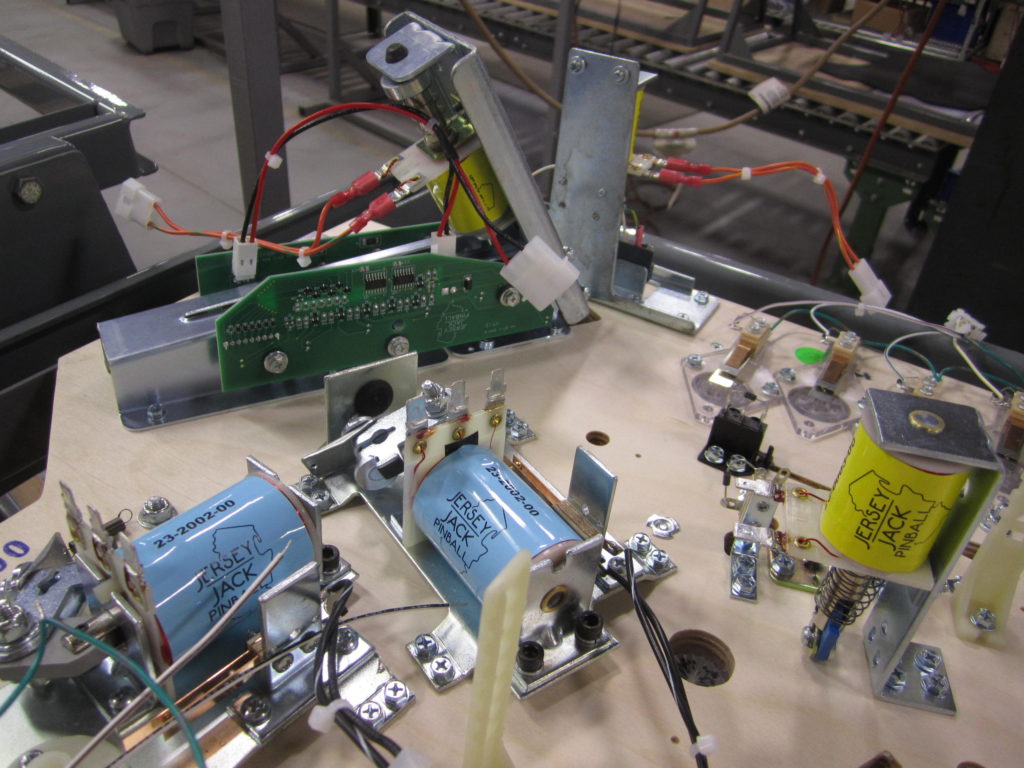
Some of your employees are still pretty young. Do you also try to mentor a new generation of pinball designers? Most of the well known designers belong to an older generation.
We are all getting older. None of us are getting younger every day, even though we wanna still believe we‘re 17. What we have to do and what we are doing is we‘re cultivating new people that we can mentor to teach. They have to have a passion to start with. Probably they‘ll not gonna come out of college and say „Gee, I wanna be a pinball designer!“ because there are not really that many courses as there are to become laywers … Does the world need more laywers? I don‘t think so. So we take from our customer and player base, people that have a passion. We get them involved in doing things with the company and we get them together with some people who have done this for years and they learn. That‘s how you have to make this thing continue forever really.
Do you get fanmail, proposals or anything like that?
I do, I could show you a lot of it. I get unsolicited ideas just like maybe a musician gets songs in the mail – sometimes you really don‘t want them because maybe you‘re working on something already and somebody wants to say „Well, I gave you that idea to put five flippers on the game. Now, there‘s five flippers on the game!“ – You don‘t want that. But we get a lot of people who bake us cakes and cookies in the shape of the Jersey Jack logo or Yellow Brick Road or Hobbit things or whatever it is – and it‘s all great. There‘s a lot of passion, love and appreciations for what we do.
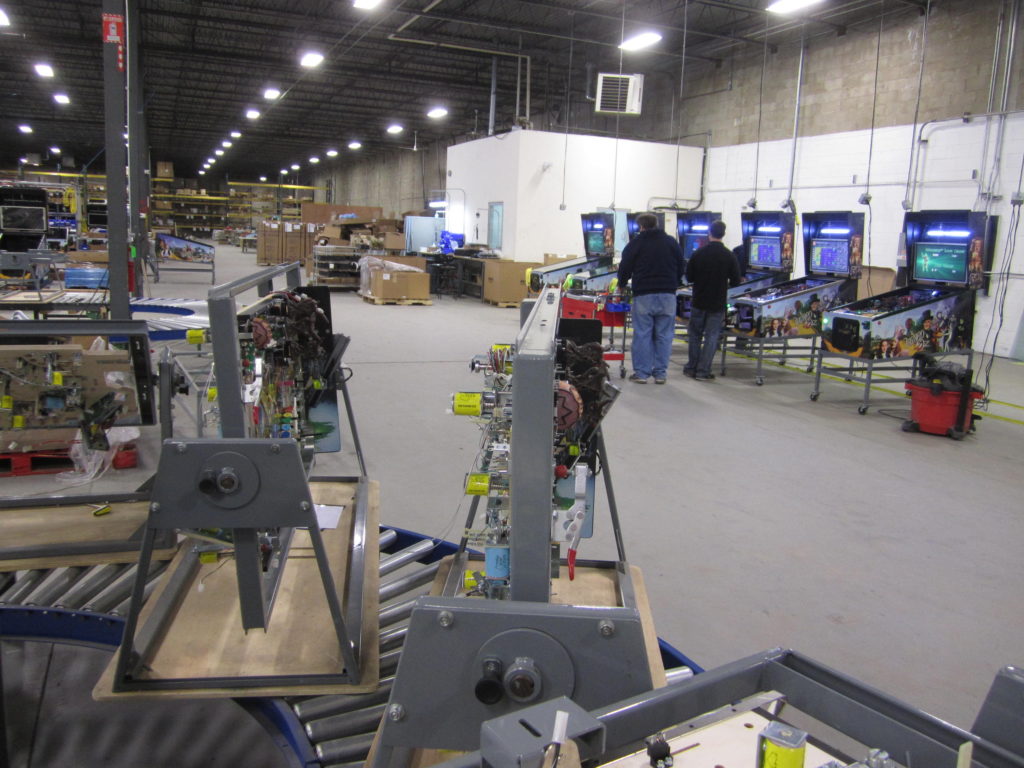
Do you travel a lot and try to be at shows, meeting distributors and customers?
Yes, and I love doing that. I‘m the CEO and the president, but CEO means Chief Enthusiasm Officer in a lot of ways. I‘m the companies cheerleader, I‘m the face of the company – I understand that. I have a job to do, but it‘s not a job to me, it‘ something I love. I love being with our customers, I love being at shows, I love playing pinball and talking about it. I have the greatest job on planet Earth: Ed Robertson, the lead singer of Barenaked Ladies, got bit by the pinball bug. And he was at the show for the first time in Texas. And that‘s what he said to me: „You know, you‘ve got the greatest job in the world!“ – And he is like a rockstar kind of guy. So they look at it in a different way, and it is pretty cool.
